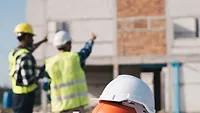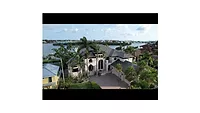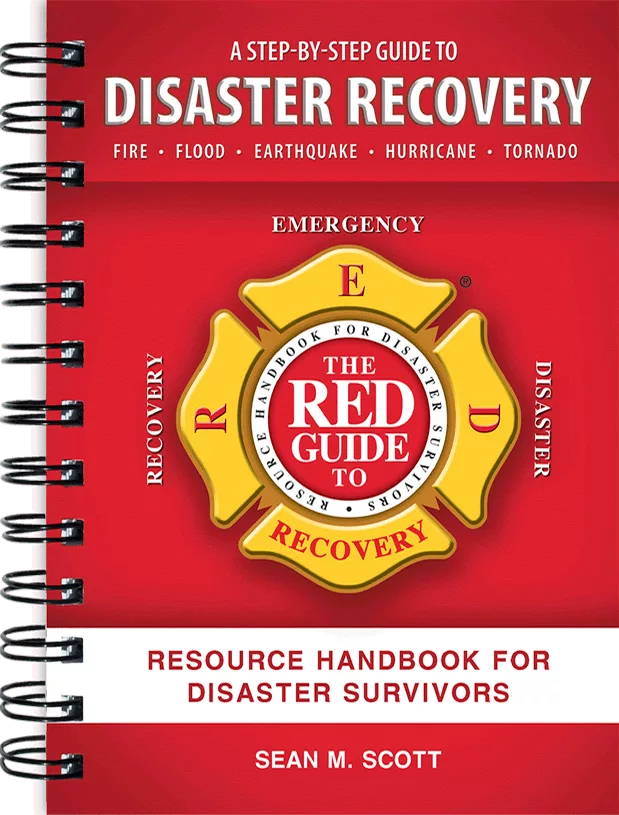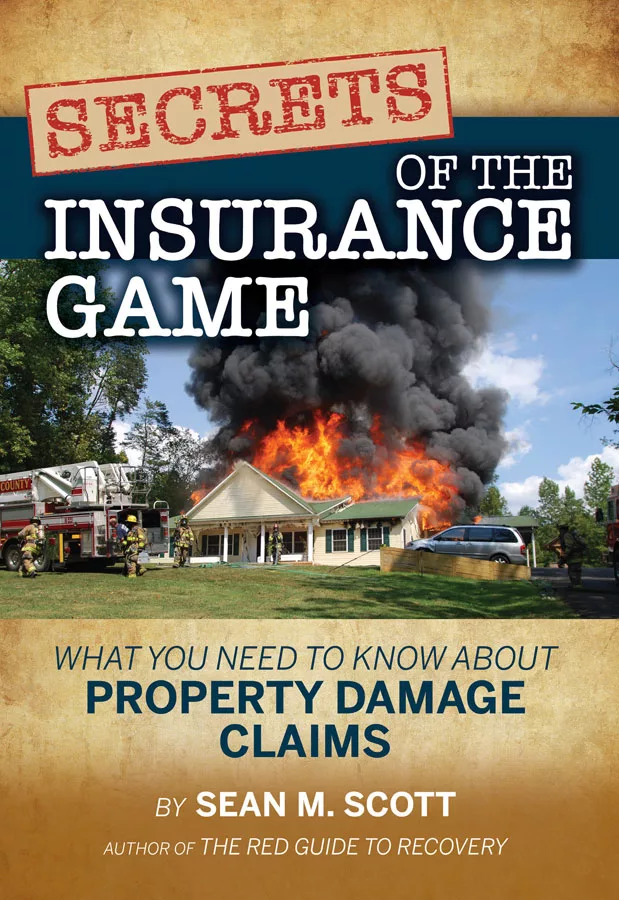A Deep Dive into Florida's 25% Roofing Rule

Photo credit: Ivan Cholakov / iStock / Getty Images Plus via Getty Images
Florida's 25% Reroofing Rule, found in the 2020 (Seventh Edition) Florida Building Code– Existing Building Edition’s Chapter 7 Section 706 EXISTING ROOFING and as modified by Florida Legislature’s SB 4-D.
While the “25% rule” has been in the Florida Building Code (FBC) for many years, recent legislative changes, specifically within Senate Bill 4-D (2022), have clarified and/or changed the way this specific code section on existing roofing is to be applied.
Senate Bill 4-D added Section 1, Subsection (5) to Florida Statute 553.844 Windstorm loss mitigation; requirements for roofs and opening protection. This subsection states:
(5) Notwithstanding any provision in the Florida Building Code to the contrary, if an existing roofing system or roof section was built, repaired, or replaced in compliance with the requirements of the 2007 Florida Building Code, or any subsequent editions of the Florida Building Code, and 25 percent or more of such roofing system or roof section is being repaired, replaced, or recovered, only the repaired, replaced, or recovered portion is required to be constructed in accordance with the Florida Building Code in effect, as applicable. The Florida Building Commission shall adopt this exception by rule and incorporate it in the Florida Building Code. Notwithstanding s. 553.73(4), a local government may not adopt by ordinance an administrative or technical amendment to this exception.
The significance of this subsection is that it serves to establish an effective date after which all properly permitted existing roof coverings are deemed to be compliant with the current code. It is important to understand, however, that the effective date of the 2007 edition of the FBC went into effect on March 1, 2009. Hence this date is now to be used as the threshold date for application of the 25% rule found in the Florida Building Code.
Florida Building Code 25% Reroofing Rule
Florida Building Code – Existing Building §706.1.1:
Not more than 25 percent of the total roof area or roof section of any existing building or structure shall be repaired, replaced or recovered in any 12-month period unless the entire roofing system or roof section conforms to requirements of this code.
This means that if more than 25% of the roofing is damaged and the roof was not properly permitted (after March 1, 2009) then the entire roofing section must be reroofed. In the reverse, if the roof was properly permitted (after March 1, 2009) and the permit was subsequently “closed out” then this rule does not apply.
Florida Building Code – 25% Rule Decision Path
Was the current roof covering properly permitted after March 1, 2009?
If “YES” – Only repair/replace the area that is damaged regardless of extent of area damaged.
If “NO” – Is the extent of the area that is damaged less than 25% of the respective roof section?
If “YES” – Only repair/replace the area that is damaged.
If “NO” – Repair/replace the entire roofing section that contains the damage.
(NOTE: upgrades may be required to the area being repaired/replaced)
The definition of a “roof section” is found in the Florida Building Code – Existing Building Edition’s Chapter 2 Section 202 DEFINITIONS.
Florida Building Code — Definitions - Roof Section
Florida Building Code — Existing Building Section 202:
ROOF SECTION. A separating or division of a roof area by existing expansion joints, parapet walls, flashing (excluding valley), difference of elevation (excluding hips and ridges), roof type or legal description; not including the roof area required for a proper tie-off with an existing system.
This means that both sides of a sloped roof are one section but changes in roofing material or changes in elevation are different roof sections.
Examples
Single Family Residence
This building has two roof sections shown as 1) the shingles/tile and 2) built-up membrane. While the ridges and valleys do not constitute separations between roof sections, different material types do constitute separations.
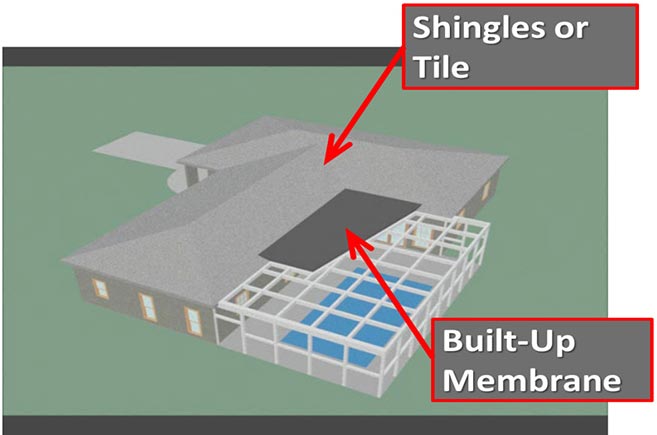
Townhouse
This building has 15 roof sections shown. Roof sections 1 through 10 are separated by elevation and possibly material type. Sections 11 through 15 are separated by property lines.
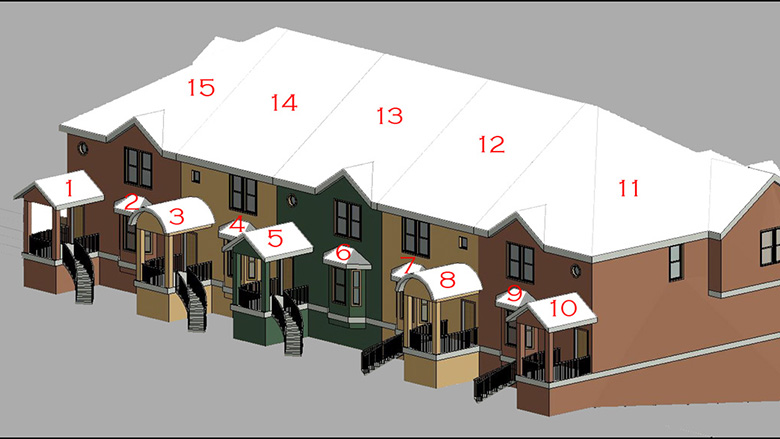
Condominium
This building has 11 roof sections shown. Roof sections 1 through 10 are separated by elevation and possibly material type. Unlike the townhouse, the roof atop a condominium is not separated by property lines and is only one section.
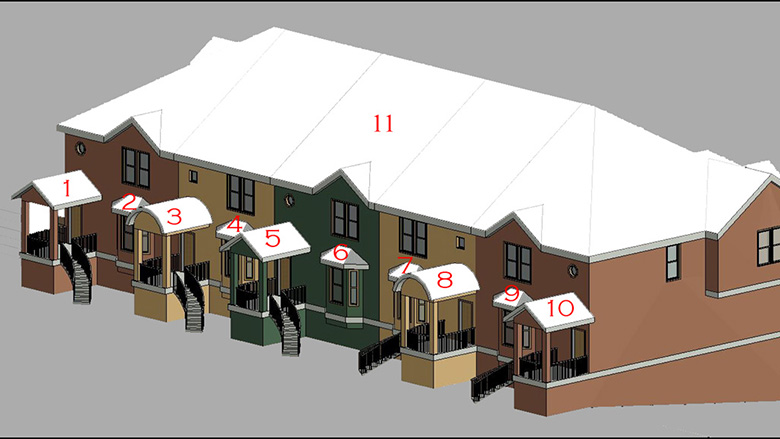
Related Work
Section 502.3 in the 2017 (Sixth Edition) Florida Building Code Existing Building - Related work:
Work on nondamaged components that is necessary for the required work repair of damaged products shall be considered part of the repair and shall not be subject to the provisions of Chapter 6, 7, 8 9, or 11.
On December 31, 2020, the 2020 (7th Edition) Florida Building Code went into effect. As part of the 2020 Florida Building Code – Existing Building, some of the chapters were revised. In the older code edition there was some confusion as to what was a “repair” and what was an “alteration.” As part of the 2020 7th Edition, “repairs” are now separated from “alterations.” The repairs section now has its own chapter (Chapter 4).
When “repairs” was pulled out of the old Chapter 5 and moved to Chapter 4, the term “related work” (and its definition) were inadvertently left out of the new version of Chapter 4. This led to the misinterpretation that “related work” was no longer in the Building Code and as such was no longer excluded from the repair calculation. In other words, some were of the opinion that the non-damaged items adjacent to the items requiring repair and disturbed by the repair activities could no longer be deemed non-damaged items.
In response to this misinterpretation the Florida Building Commission provided clarification within its Declaratory Statement, DS 2021-007. In DS 2021-007, the Commission is stated:
In accordance with the definition of the term "Roof Section" in section 202, Florida Building Code, Existing Building, 7th Edition (2020), and the provisions of section 706.1.1, Florida Building Code, Existing Building, 7th Edition (2020), related work which involves the removal and installation of components for the purpose of connecting repaired areas to unrepaired areas (roof areas required for a proper tie-off) shall not be considered part of the roof repair in question, and therefore such related work shall not be counted toward the 25 percent threshold stated in section 706.1.1, Florida Building Code, Existing Building, 7th Edition (2020).
As such, related work necessary to address the primary work area shall not be included in the calculations to determine the total percentage of the roof area. In other words, the non-damaged items adjacent to the items requiring repair remain non-damaged items whether they are disturbed or not.
The 25% rule related to roofing in the State of Florida has undergone some administrative changes in order to clarify the way it is applied. Namely, Senate Bill 4-D established the threshold date to follow that of the 2007 Florida Building Code (March 1, 2009) and Declaratory DS 2021-007 issued by the Florida Building Commission has effectively brought “related work” back into the determination process.
Looking for a reprint of this article?
From high-res PDFs to custom plaques, order your copy today!






